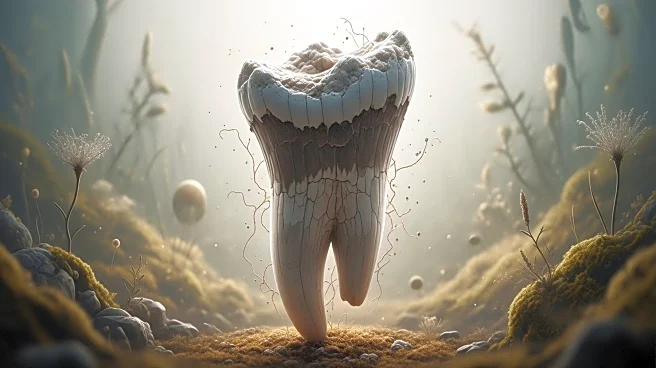What's Happening?
Researchers at the Centre for Palaeogenetics have uncovered microbial DNA in woolly and steppe mammoth remains dating back over one million years, marking the oldest microbial DNA ever recovered. The study, published in Cell, identified bacteria that may have caused disease in mammoths, including relatives of pathogens affecting modern elephants. The research involved analyzing DNA from 483 mammoth specimens, revealing six microbial clades consistently associated with mammoth hosts. This discovery provides a new perspective on the evolution of host-associated microbes and their role in ancient ecosystems.
Why It's Important?
The findings offer unprecedented insights into the microbiomes of extinct megafauna, shedding light on how microbes influenced adaptation, disease, and extinction in Pleistocene ecosystems. By pushing the limits of ancient DNA research, this study opens new avenues for understanding the biology of extinct species beyond their genomes. The research also raises questions about the potential vulnerability of mammoths to infections similar to those affecting their modern relatives, providing a deeper understanding of ancient disease dynamics.
What's Next?
The study paves the way for further exploration of ancient microbial communities and their interactions with hosts. Future research may focus on reconstructing more microbial genomes from ancient remains, offering a comprehensive view of microbial evolution and its impact on host species. The findings could also inform conservation efforts by providing insights into the historical relationships between hosts and their microbiomes.
Beyond the Headlines
This research highlights the potential of ancient DNA to preserve biological insights far beyond the host genome, offering perspectives on microbial evolution and its role in shaping ecosystems. The study underscores the importance of interdisciplinary collaboration in uncovering the complex interactions between ancient hosts and their microbiomes, providing a new window into the biology of extinct species.












